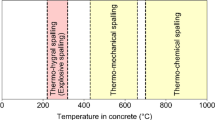Abstract
The response time of fire sprinklers is essential for their performance, especially in applications where life safety protection is desired. The earlier the sprinkler activates, the smaller the size of the fire. Most commercial residential sprinklers are fitted with 3 mm, 68°C glass bulbs. However, thinner sprinkler glass bulbs with lower operating temperatures are available. The aim of this study was to determine the response time—and the corresponding heat release rate—of different glass bulbs in a residential room fire scenario. A series of tests were conducted inside a compartment measuring 3.66 m by 3.66 m having a ceiling height of 2.5 m. The compartment was either enclosed or had two walls removed to provide a more ventilated scenario. A propane gas burner was positioned at one of the corners. The mass flow rate of the gas was controlled such that either ‘slow’, ‘medium’ or ‘fast’ fire growth rate scenarios were simulated. In each test, nine Response Time Index (RTI) and operating temperature combinations were tested. Each test was replicated three times. In addition, two commercial fire detectors were tested. The results show that the fire is considerably smaller upon activation with a combination of a low RTI and a low operating temperature, as compared to the 3 mm, 68°C glass bulb typically used for residential sprinklers. The operating temperature proved to have a larger impact on the results than the RTI. The heat from the fire was typically detected by the fire detectors prior to the activation of the sprinkler glass bulbs, especially for the ‘slow’ and ‘medium’ fire growth rate scenarios.










Similar content being viewed by others
References
Hall JR (2013) U.S. experience with sprinklers. National Fire Protection Association, Fire Analysis and Research Division
Hall Jr, John R, Ahrens M, Evarts B (2012) Sprinkler impact on fire injury. The Fire Protection Research Foundation
Sprinkler effectiveness in care homes (2007) Final Research Report: BD 2546, Department for Communities and Local Government: London
Fleming RP (1985) Quick response sprinklers: a technical analysis. National Fire Protection Research Foundation
Fleming RP (1991) Fast-response sprinklers: a technical analysis. In: Automatic sprinkler systems handbook. National Fire Protection Association
Heskestad G, Smith HF (1976) Investigation of a new sprinkler sensitivity approval test: the plunge test. FMRC 22485, Factory Mutual Research Corporation, Norwood
Heskestad G, Smith HF (1980) Plunge test for determination of sprinkler sensitivity. FMRC 3A1E2.RR, Factory Mutual Research Corporation, Norwood
ISO 6182–1:1993(E) (1993) Fire protection—Automatic sprinkler systems—part 1: requirements and test methods for sprinklers. International Organization for Standardization, 1st edn.
ISO 9705:1993 (1993) Fire tests—full-scale room test for surface products. International Organization for Standardization
NFPA 13D (2016) Standard for the installation of sprinkler systems in one- and two-family dwellings and manufactured homes. National Fire Protection Association, 2016 edition
NFPA 13R (2016) Standard for the installation of sprinkler systems in low-rise residential occupancies. National Fire Protection Association, 2016 edition
Gottuk DT, Pomeroy AT (2011) Heat detector RTI—new developments. In: Fire suppression and detection research and applications—a technical working conference, Orlando, National Fire Protection Research Foundation, Florida
Acknowledgements
Jürgen Teschner from Job GmbH provided the sprinkler glass bulbs and Jan Blomqvist from Siemens AB the fire detectors and associated equipment as well as provided help with the data recording. The technical input and support from these people is gratefully acknowledged. The staff at RISE is also gratefully acknowledged, especially Morgan Lehtinen who was responsible for the measurement equipment and Mikael Björnram that manufactured the glass bulb mounts. The tests were financed by the Swedish Civil Contingencies Agency (MSB) under the project “Analys av brandsäkerhetens fysiska bestämningsfaktorer och tekniska åtgärder som stöd till nollvisionen” (“Analysis of fire safety physical determinants and technical measures to decrease the number of casualties in residential fires”) which is gratefully acknowledged.
Author information
Authors and Affiliations
Corresponding author
Rights and permissions
About this article
Cite this article
Arvidson, M. The Response Time of Different Sprinkler Glass Bulbs in a Residential Room Fire Scenario. Fire Technol 54, 1265–1282 (2018). https://doi.org/10.1007/s10694-018-0729-8
Received:
Accepted:
Published:
Issue Date:
DOI: https://doi.org/10.1007/s10694-018-0729-8




